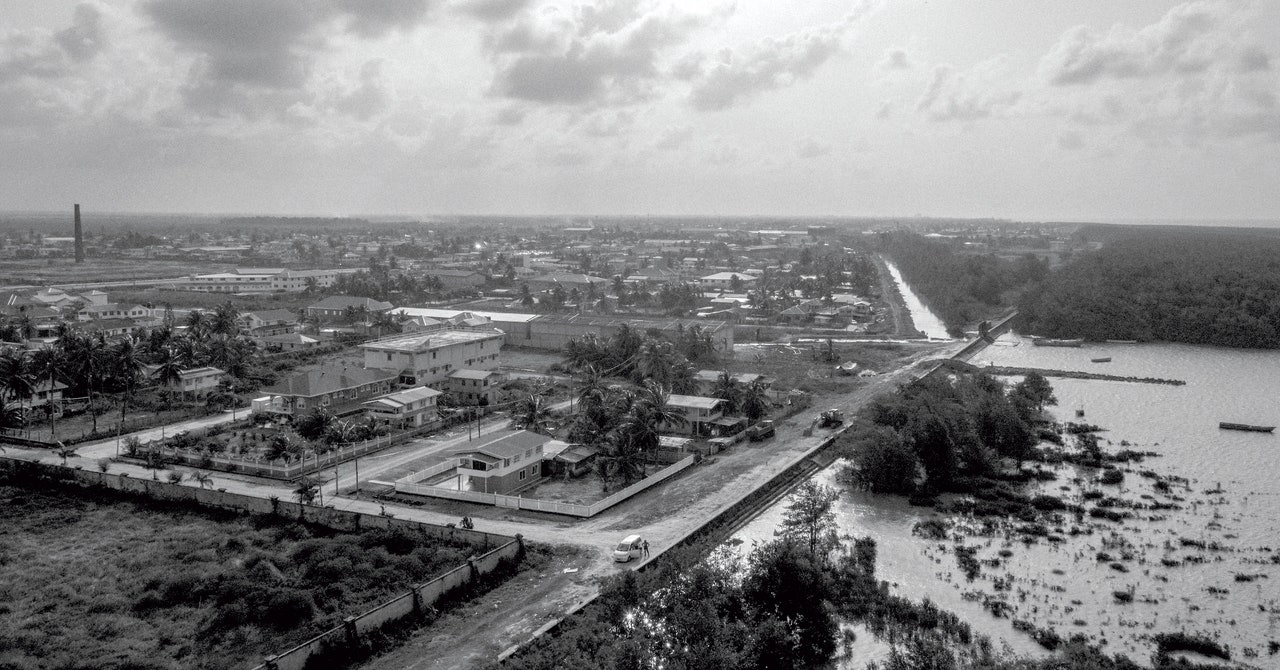
In March 2015, the Deepwater Champion rig was at work for Exxon Mobil, exploring for oil in the Atlantic Ocean 120 miles off the coast of Guyana, drilling below 6,000 feet of water and through 12,000 feet of earth. Ultra-deepwater drilling is so complex that experts liken it to space travel, and the dangers are well known. Five years earlier, the Deepwater Horizon rig was at work for BP when it exploded in the Gulf of Mexico, killing 11 workers and setting off the worst offshore oil spill in history. (The rig in Guyana was owned and operated by the same company, Transocean, that ran the rig in the Gulf.)
Only two months after it began exploring, Exxon struck oil. The first significant find in Guyana’s history came as a shock. Exxon Mobil’s then CEO, Rex Tillerson, told shareholders it was the largest oil find anywhere in the world that year. The Guyanese government, led by President David Granger of the People’s National Congress Reform, quickly signed a contract with Exxon and awarded the company a series of 23-year permits—which were at the time withheld from the public. When production began four years later (“a fraction of the time it usually takes,” according to Exxon spokesperson Meghan MacDonald), Guyana was officially ushered into the exclusive club of oil-producing nations. President Granger proclaimed it National Petroleum Day and said the discovery would transform the country’s economic development and ensure a “good life” for all.
The People’s Progressive Party, led by Bharrat Jagdeo, accused Granger of signing a one-sided deal with Exxon in exchange “for peanuts.” Industry analysts have found that the government is receiving a below-average return on Exxon’s projects. Exxon will recoup all of its expenses, including all development and operating expenses, out of the oil it extracts, leaving the government and public to largely absorb the company’s costs. For every barrel of oil produced, until it recovers its costs, Exxon receives 85.5 percent of the value of the oil compared to Guyana’s 14.5 percent, according to the Institute for Energy Economics and Financial Analysis.
Exxon maintains that the contract terms are competitive and that it “provides a structure and terms that are equitable to both the government and investing companies, commensurate with the risk associated with each project.”
Janki, meanwhile, set her sights on scuttling the entire Exxon operation in Guyana. “At that moment nobody else was willing to challenge what the oil sector was doing,” Janki says. In 2018, she realized she would have to go to court.
Janki filed a suit, based on the Environmental Protection Act, arguing that the government had acted illegally by granting production licenses to the two companies that Exxon is partnering with, as they had not filed their own environmental impact assessments. The judge ruled that the license granted to Exxon was sufficient, but Janki was not dissuaded. She began giving talks and lectures, arguing that there were grounds to challenge Exxon’s operations, and she soon found a kindred spirit in Troy Thomas, who was then president of the Transparency Institute, the nation’s leading anti-corruption organization. In time, he would become one of her most important collaborators.
When Exxon started operating in Guyana, Thomas, like Janki, worried that the corrupting force of oil money would threaten the country’s meager political gains of the past few years—the dreaded “oil curse.” Countries that depend on exporting oil are among the most economically troubled, authoritarian, and conflict-ridden nations in the world. Terry Lynn Karl, a professor at Stanford University, documents how, in the past 40 years, the consequences of becoming oil-rich—far from the promise it offers—have tended to be more destructive than positive. Thomas was well aware of this, as well as of the growing efforts worldwide to shift away from fossil fuels altogether. “We know that petroleum is a dead end,” he says.


